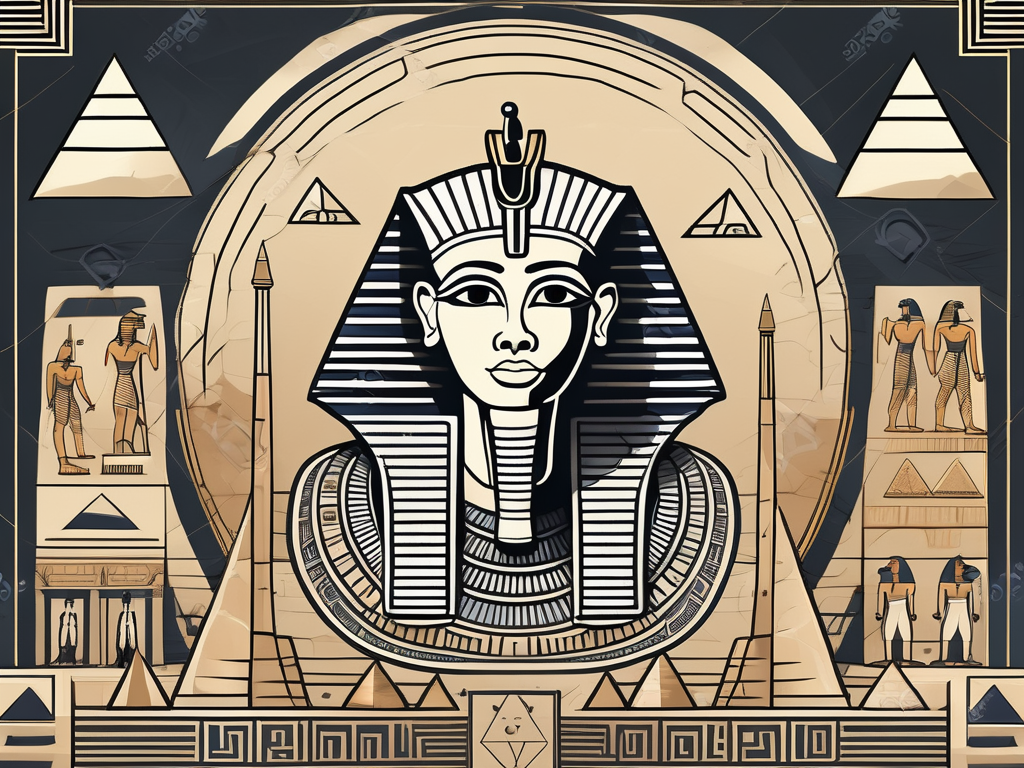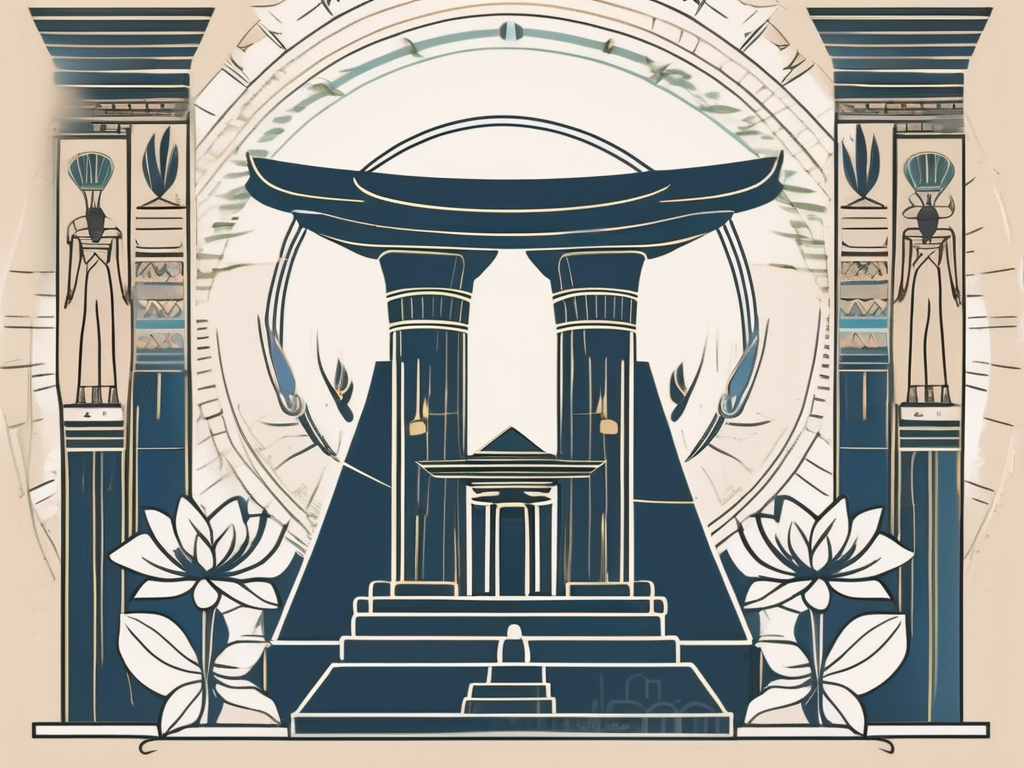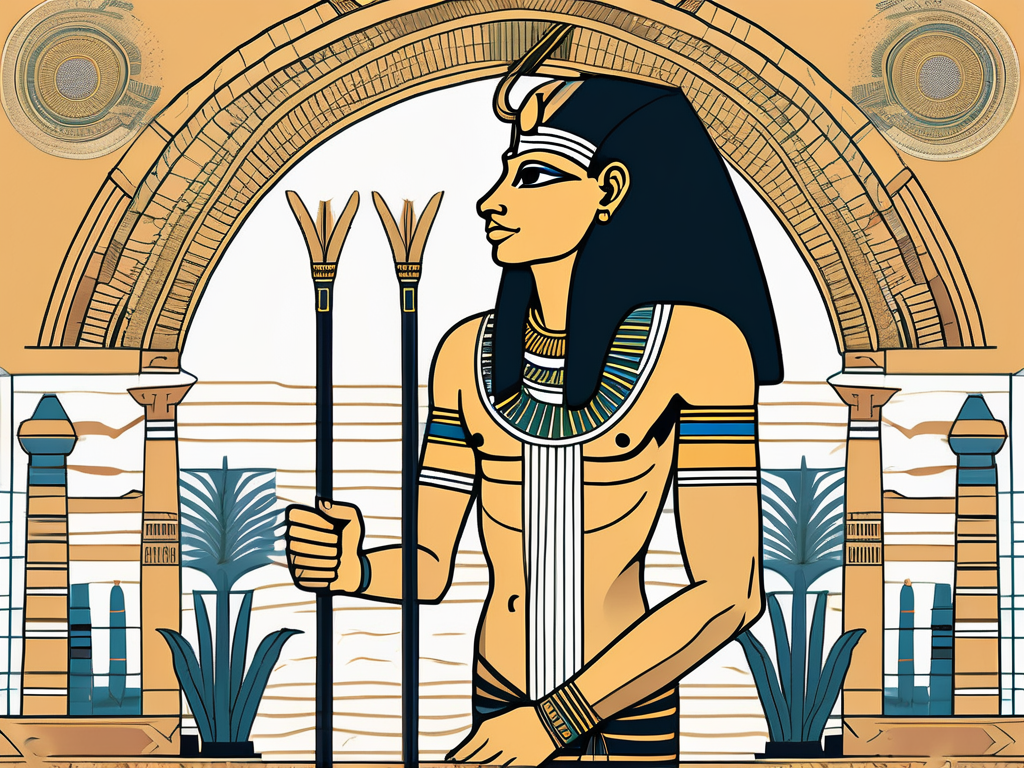The ancient Egyptian pantheon is home to a multitude of gods and goddesses, each with their own unique stories and attributes. One such deity is Zenenet, a figure shrouded in mystery and intrigue. In this article, we will delve deep into the enigmatic world of Zenenet, uncovering the secrets behind this fascinating god and exploring their role in ancient Egyptian society.
Unveiling the Identity of Zenenet
Who exactly is Zenenet? The answer to this question has long confounded scholars and historians. Zenenet, also known as Zhenenet, was a goddess associated with fertility and agriculture. However, unlike other deities in the Egyptian pantheon, Zenenet’s identity remains somewhat elusive. This has led to a variety of interpretations and conflicting theories about their origins and significance.
The Historical Context of Zenenet
In order to understand Zenenet’s place in Egyptian mythology, it is important to examine the historical context in which they emerged. Zenenet worship can be traced back to the Old Kingdom era, around 2686–2181 BCE. This was a time of great agricultural importance, with the Nile River playing a crucial role in sustaining the civilization. It is believed that Zenenet’s association with fertility and agriculture was closely tied to the prosperity and abundance brought about by the Nile’s annual flooding.
The Nile River, often referred to as the lifeblood of ancient Egypt, was not only a source of water but also a natural irrigation system. The annual flooding of the Nile deposited nutrient-rich silt onto the riverbanks, creating fertile soil that was ideal for agriculture. This abundance of fertile land allowed the ancient Egyptians to cultivate a variety of crops, including wheat, barley, flax, and various fruits and vegetables. The success of their agricultural endeavors was crucial for the survival and prosperity of the civilization.
Within this context, Zenenet emerged as a deity closely associated with the agricultural cycle. They were believed to have the power to ensure bountiful harvests and the successful growth of crops. Farmers and agricultural communities would offer prayers and make offerings to Zenenet, seeking their favor and protection. It was believed that by appeasing Zenenet, one could ensure the fertility of the land and the abundance of food for the people.
Zenenet in Egyptian Mythology
In Egyptian mythology, Zenenet was often depicted as a young woman with a pointed headdress and an amulet symbolizing fertility. They were associated with the growing of crops and the birthing of both humans and animals. Zenenet was also believed to protect women during childbirth, ensuring the safe delivery of healthy babies. Their role as a fertility goddess made them a beloved and revered figure in ancient Egyptian society.
As a symbol of fertility, Zenenet was often invoked by couples who desired to have children. Offerings and prayers were made to Zenenet in hopes of receiving their blessing and assistance in conceiving. In addition to their association with agriculture and childbirth, Zenenet was also believed to have the power to grant general prosperity and abundance to individuals and communities.
It is worth noting that Zenenet’s gender is often debated among scholars. While they are typically depicted as a female deity, some interpretations suggest that Zenenet may have also encompassed masculine qualities. This ambiguity further adds to the mystery surrounding their identity and significance within Egyptian mythology.
Despite the ongoing debates and uncertainties, Zenenet’s role as a fertility and agricultural deity remains an important aspect of ancient Egyptian culture and religion. Their association with the natural cycles of growth and abundance reflects the deep connection that the ancient Egyptians had with the land and their dependence on it for sustenance and survival.
The Symbolism and Iconography of Zenenet
When it comes to symbolism and iconography, Zenenet holds a special place among the Egyptian gods. Their association with fertility and agriculture is evident in the motifs often used to represent them. Fruits, flowers, and grains were commonly depicted alongside Zenenet, symbolizing the abundance and prosperity they brought to the land. These visual representations served as a powerful reminder of Zenenet’s role in sustaining life and nurturing the ancient Egyptian civilization.
But what lies beneath the surface of these symbols? What deeper meanings can be found in Zenenet’s association with fertility and agriculture?
Zenenet’s connection with fertility and agriculture was deeply ingrained in ancient Egyptian culture. The abundance of crops and the successful breeding of livestock were seen as signs of Zenenet’s favor. Farmers and agricultural workers would offer prayers and sacrifices to Zenenet, seeking their blessings for a bountiful harvest. The goddess’s role in ensuring the fertility of the land made them a vital figure in the lives of the ancient Egyptians.
But Zenenet’s influence extended beyond the fields and into the realm of human fertility as well. The goddess was often invoked by couples hoping to conceive a child. Offerings and prayers were made at Zenenet’s temples, with the belief that their intervention would grant the gift of parenthood. Zenenet’s association with fertility went beyond the physical realm, encompassing the creation and nurturing of new life in all its forms.
Zenenet’s Unique Depictions
What sets Zenenet apart from other deities is the unique way in which they are portrayed in ancient Egyptian art. Unlike the grandiose and imposing depictions of gods like Ra or Amun, Zenenet is often depicted in a more intimate and naturalistic manner. Their youthful appearance and calm demeanor convey a sense of nurturing and fertility. Zenenet’s depictions offer a glimpse into the softer, more compassionate side of the Egyptian pantheon.
But there is more to Zenenet’s depictions than meets the eye. The choice of materials and colors used in their representations also hold symbolic significance. Earthy tones such as greens and browns are often employed, symbolizing the fertility of the land and the abundance it brings. The use of gold accents represents the divine nature of Zenenet and their connection to the sun, a symbol of life and vitality.
Furthermore, Zenenet is often depicted in close proximity to animals associated with fertility and abundance. Birds, such as doves and geese, are frequently depicted alongside the goddess, symbolizing the cycle of life and the connection between the heavens and the earth. The presence of these animals further emphasizes Zenenet’s role as a bringer of life and prosperity.
In conclusion, Zenenet’s symbolism and iconography go beyond mere visual representations. They serve as a testament to the goddess’s vital role in ancient Egyptian society, ensuring the fertility of the land and the prosperity of its people. Through their unique depictions, Zenenet offers a glimpse into the nurturing and compassionate side of the Egyptian pantheon, reminding us of the interconnectedness of all life and the importance of fertility in sustaining civilizations.
Zenenet’s Role in Ancient Egyptian Society
Beyond their association with fertility and agriculture, Zenenet played a significant role in various aspects of ancient Egyptian society. Their influence extended beyond the fields and into the daily lives of the people.
Zenenet’s Influence on Daily Life
For the ancient Egyptians, Zenenet was not just a deity to be worshipped from afar; they were an integral part of everyday life. People would invoke Zenenet’s name and seek their guidance when it came to matters of childbirth, family, and household affairs. The goddess was believed to bring blessings and prosperity to those who honored and respected them. Zenenet’s presence in the lives of the ancient Egyptians reinforced the importance of fertility and the continuation of life.
Zenenet in Religious Rituals and Festivals
Religious rituals and festivals played a central role in ancient Egyptian society, and Zenenet was often a featured figure in these events. During harvest festivals, offerings would be made to Zenenet to express gratitude for the abundance of crops. Additionally, special ceremonies were held to honor the goddess and seek their favor for a fruitful year ahead. These rituals and festivals served as a way for the community to come together and celebrate the life-giving blessings bestowed upon them.
The Temples and Shrines of Zenenet
Zenenet’s divine presence was not confined to the hearts and minds of the ancient Egyptians; it was also manifested in grand temples and shrines dedicated to their worship.
Architectural Marvels Dedicated to Zenenet
The construction of temples and shrines devoted to Zenenet was a testament to the people’s devotion and reverence for the goddess. These architectural marvels often featured intricate carvings and painted scenes depicting Zenenet’s role as a fertility deity. The temples served as sacred spaces where people could come to pay their respects and seek divine intervention in matters of fertility and abundance.
The Geographic Distribution of Zenenet’s Worship
Zenenet’s worship was not limited to a specific region of ancient Egypt; their popularity spread throughout the land. Temples and shrines dedicated to the goddess could be found in various cities and towns, each serving as a center of worship and a gathering place for the community. Zenenet’s widespread presence is a testament to the universal appeal of their role as a fertility deity.
Zenenet’s Legacy in Modern Culture
The influence of Zenenet can still be seen and felt in modern Egyptian culture. Their legacy has left an indelible mark on art, literature, and folklore.
Zenenet’s Influence on Literature and Art
Throughout history, Zenenet has served as a muse for countless artists and writers. Their association with fertility and agriculture has inspired poems, paintings, and sculptures that celebrate the beauty and abundance of life. Zenenet’s presence in literature and art continues to captivate audiences and keeps their stories alive for future generations to enjoy.
Zenenet in Contemporary Egyptian Folklore
Even in modern times, Zenenet’s influence can still be felt in Egyptian folklore and traditions. They are often depicted as a benevolent and protective figure, guiding and sustaining the community. Their role in ensuring fertility and abundance remains an important aspect of Egyptian identity and cultural heritage.
In conclusion, Zenenet, the enigmatic Egyptian god associated with fertility and agriculture, continues to captivate and inspire. From their elusive identity to their profound influence on ancient Egyptian society, Zenenet’s story is one that deserves to be explored and celebrated. By uncovering the mysteries surrounding this fascinating deity, we gain a deeper understanding of the rich tapestry of Egyptian mythology and the enduring legacy of Zenenet.












